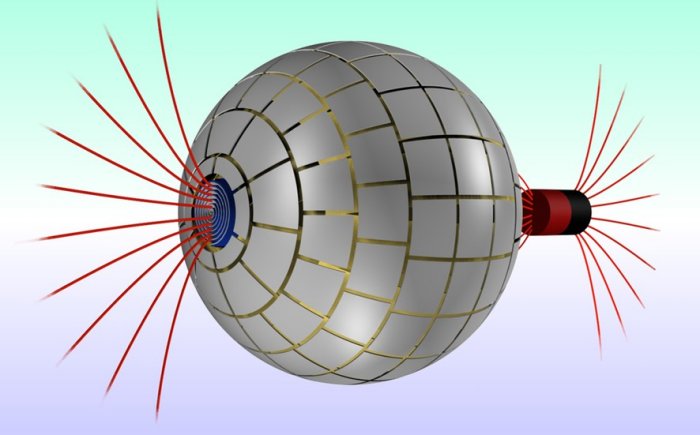MessageToEagle.com – In science, decades can pass between a proposed theory and its real-world application.
That is precisely what University of Washington mathematics professor Gunther Uhlmann was expecting when he and three colleagues proposed a means to develop an electromagnetic wormhole in a 2007 paper in Physical Review Letters.
Their theoretical wormhole — an invisible tube for electromagnetic fields — would cloak an electromagnetic field while it passed through the tube, creating a “secret” connection between the entry and exit point. Uhlmann expected their theory to remain just that for quite some time. Instead, this past summer he learned that a group in Spain had created a cloaking field based upon it.
“We thought this would take a long time to realize,” said Uhlmann. “I’m happy to see something you dream about theoretically come about in practice.”

The cloaking field Uhlmann and his colleagues proposed was not the type of invisibility field depicted in science fiction or even Harry Potter’s invisibility cloak. Their 2007 manuscript details a specific mechanism to cloak electromagnetic fields under certain circumstances. The cloaked field, such as a magnetic field, would not be detectable by an outside observer and would not disrupt other magnetic fields.
“To do this, you would construct a material that surrounds the object in such a way that currents go around it. Thus, the object is made ‘invisible’ to any attempt to measure it from the outside,” said Uhlmann. “You’re warping space, so that lines go around the cloaked object rather than through it. It’s like the water flowing around a rock.”
Though it was just a model, Uhlmann’s theoretical device for cloaking magnetic fields would have practical applications, such as in devices that use optical data transmission. Another real-world use for magnetic field cloaking would be medicine. Magnetic resonance imaging, or MRI, utilizes magnetic fields. A cloaking device for magnetic fields could make it easier for doctors to utilize MRI during operations by “hiding” the field from surgical instruments.
“That’s just one application. But who knows what other applications there could be for this theory, which works for almost any kind of wave,” said Uhlmann.
The primary reason this theory seemed so far from practice centered on the physical and mathematical constraints of the cloaking field. Rendering a magnetic field invisible to outside observers — but without disrupting the inherent properties of that field — would require materials that do not exist in the natural world. Uhlmann and his colleagues knew what types of properties a cloaking material must have and that no naturally-occurring substance was up to the task.
“The experimental side of the problem requires new materials that do not have properties that exist in nature,” said Uhlmann. “They have to be artificially created.”
The general term for these substances are metamaterials, and they were the limiting factor in realizing the cloaking field, according to Uhlmann.
“The main problem is that, for this device, the metamaterials have to be constructed precisely for the wavelength of the field you want to make invisible,” he said.
A group of researchers at the Autonomous University of Barcelona were able to design and construct a metallic metamaterial that could enclose two objects: a superconducting sphere and a magnetic sheet that had been wound into a cylinder. The metamaterial had just the right properties to cloak a specific magnetic field encased within the sphere, as the authors reported in a paper published in August in Science Reports. They tested the device under different types of conditions and discovered that the magnetic field within the sphere could be rendered invisible to outside detection.
“That’s essentially what you want such a device to do,” said Uhlmann.
Uhlmann first began working with cloaking theories in 2003, back then with electric fields in two dimensions.
The 12-year gap between these first theories and the realization of a functional cloaking device — a relatively short period in science — has left him hopeful that future devices could be built. Uhlmann believes cloaking fields will help scientists learn more about the properties and behavior of electromagnetic waves. It has also left him inundated with questions from curious colleagues and bystanders.
“People will always ask me when we will see Harry Potter’s invisibility cloak,” said Uhlmann. “I always tell them this is impossible to predict — especially the future.”
MessageToEagle.com
source:






